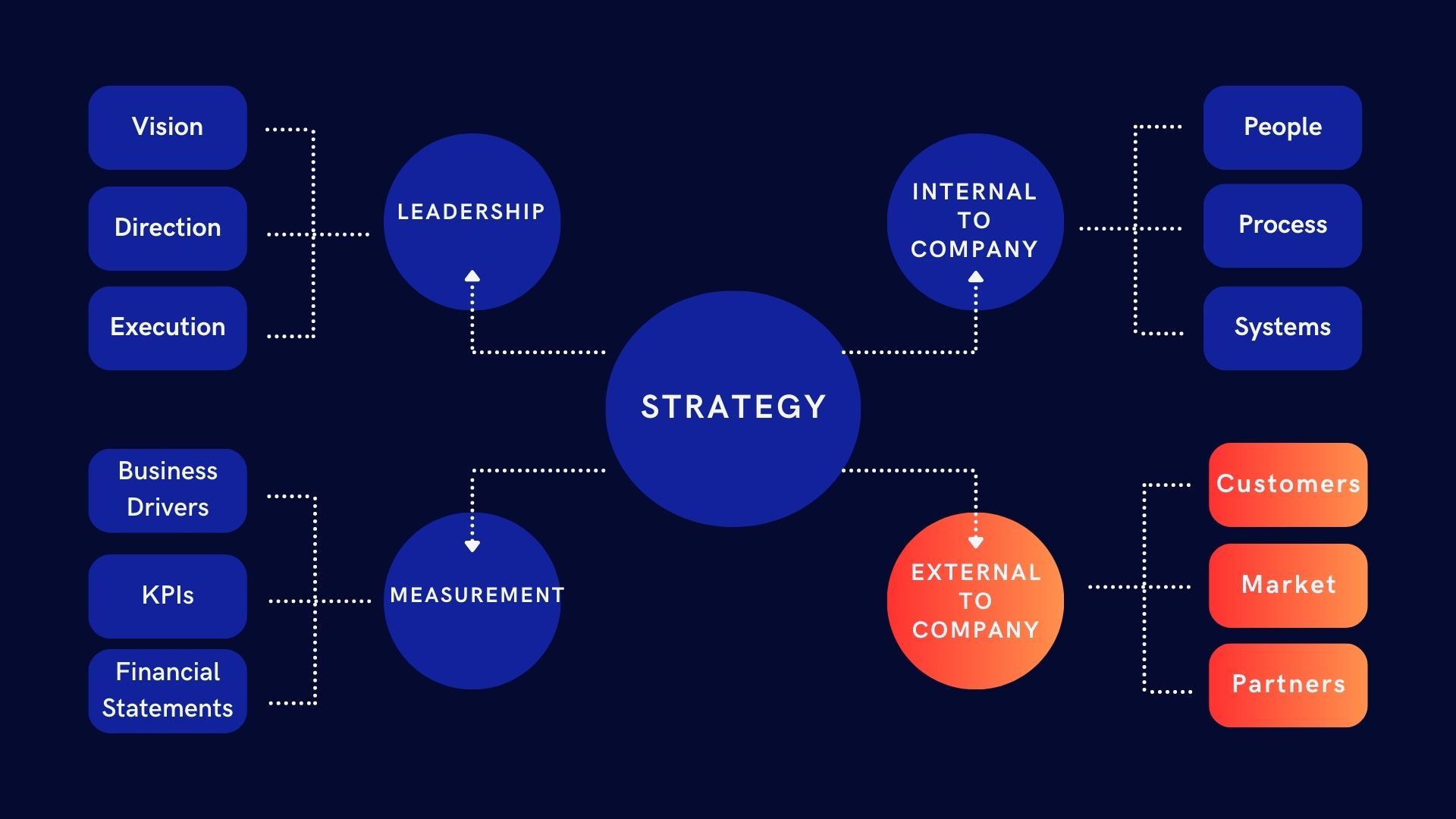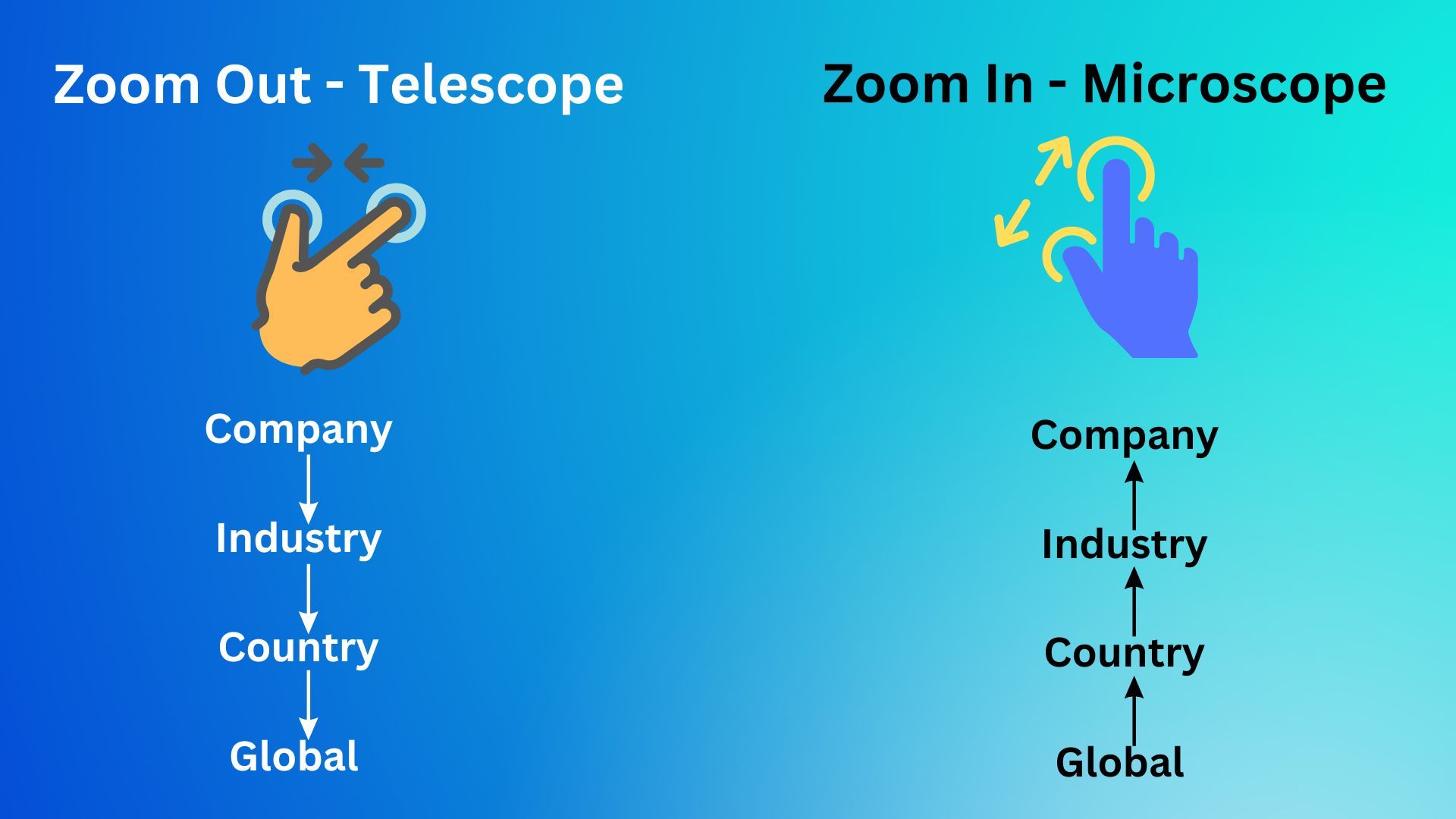Strategy Byte - Week 9 : Competitive Landscape

Table of Contents
- Recap
- External Environment
- Competitive Landscape
- Zoom In, Zoom Out
Recap
Last week we discussed customer value & how we determine a customer's worth? We also explored how long term loyal customers add more value
- By way of higher spending on company products &
- Reduced acquisition costs by way of network effects &
- Reduced maintenance costs as long as customers are happy
The link from happy customers to economic returns is through Customer Value.
Customer value is measured through Customer NPV which is nothing but the total cash flows expected throughout the lifetime of a customer discounted to today's value minus acquisition costs.
We discussed churn rate which is the number of customers leaving the company.
We cannot measure customer value in a vacuum. We need to consider competition & industry stage of the company (meaning whether it is in Introduction, Growth, Maturity or Decline).
Let us now explore the External Environment & understand the underlying forces impacting a company's strategy.
External Environment
From our framework, we touched upon customers last two weeks & how they are central to any strategy.

We are going to spend the next couple of weeks discussing Market. Now, what is market ? It's not the market where we get stuff from.

It's the external environment where the company intends to do business to serve it's customers. Roger L Martin in his book Playing to Win defined this as Where to Play. It is the environment where a company deploys it's competitive advantage & tries to earn an economic return over & above it's competitors when serving customers in the best possible way.
The Where to Play environment is not a vacuum. There are competitors, partners, regulatory authorities, suppliers, vendors etc. This shapes the choices a company makes to play in that environment. When a company identifies it's strategy, it is better to examine the competitive environment & make necessary choices to ensure it uses it's sustained competitive advantage.
The methodology of making choices is defined under How to Win. (Source : Playing to Win). We will look into the choice part later even though both Where to Play & How to Win are paired concepts & need to be considered together. It's like once we decide the market or industry where we decide to compete, the choices on how to win in that market should also be decided by then.
There are industry or market forces within the control of an enterprise & also outside it's control. It is critical to understand these forces & how they affect the environment where the company chooses to play & in turn, it's impact on the company's strategy.
Another word for External Environment is Competitive Landscape.
Competitive Landscape

What is competitive landscape?
The competitive landscape for a particular industry or market refers to the current state of competition between companies in that industry or market. It includes factors such as the number of competitors, their market share, their product offering, pricing strategies and other competitive strategies. (Source : here)
Zoom In, Zoom Out
Before we go further, let us understand the concept of zooming out & zooming in. We use Google Maps in our phones to reach a place we don't know how to get to.

We can pinch out the screen to zoom in (like a microscope) to a street or road & pinch in to zoom out (like a telescope) to see the full city or country for instance. This is also applicable for strategy also where
- We zoom out see the "Big Picture" like where to play & how to win in the area where we chose to play &
- Then zoom in to go into the details of Must Have Capabilities (M.H.C) & Enabling Management Systems (E.M.S) to achieve the strategy.
(Source : Playing to Win)
This is exactly how we are going to analyze the external environment or competitive landscape. Let us divide the topics related to our analysis of external environment into
- Zoom Out where we start from industry & move up to Global environment &
- Zoom In where we start from Global environment & move down to industry

At the highest level, zooming in means analyzing global economics & how countries interact with each other through trade & investments down to country economics like GDP, inflation etc down to industry analysis from high level to low level & zooming out means moving up in the opposite direction.
Now, why not analyze only industry & competitors which can give us a good idea of the environment where a company intends to play?
The industry & competitor analysis is a given without which we cannot understand the dynamics of the immediate environment. However, the underlying economic & global headwinds which impact a country's economy or the global economic situation should also be understood to see what forces impact the immediate as well as the overall economic environment where a company competes.
We will take the discussion under two headers :
- Concepts (e.g., macroeconomics)
- Tools (e.g., PESTLE , Five Forces etc).
We are going to unpack a lot of concepts & tools over the next couple of weeks. So, Buckle up!!
